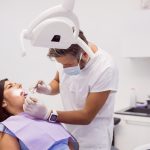In our last post, we talked about braces. We shall begin this post by first learning the difference between braces and retainers.
Braces are basically specialized dental equipment that help align teeth in a desired position. A retainer, on the other hand, is made up of molded plastic and wires and is typically removable and mostly worn for a number of hours in a day. Got the difference? We shall dive deeper into the differences by looking at their uses.
They serve different purposes. We shall start with the retainers

They fix small minor issues like involving one or two teeth or small gaps, a retainer would be the best and cheapest option
- Controlling habits such as tongue thrusting and thumbsucking. Tongue thrusting can be defined as when your tongue pushes your front teeth when you are talking or swallowing. When this goes on for a long time the repeated force can lead to misalignment of teeth.So how does a retainer help? The retainer is modified to include a component usually a metal bar and this blocks your tongue from going to the undesired position instead have it go to the roof of the mouth.For thumbsucking the metal bar is modified to create discomfort when one tries to suck their thumb thus stopping the habit.
- Managing teeth grinding -retainers can be worn at night and for this use they are specially designed not to allow teeth to close completely thus stopping grinding of teeth in your sleep
- A retainer is also used after removing braces to ensure that the tooth sticks to this new position.
- A drawback to retainers is that they take a while to align teeth especially when used to align misaligned teeth however it is less obtrusive and oral hygiene can easily be maintained.
USE OF BRACES
For more serious treatment
- Correcting open bites (this is a situation where your front teeth do not meet when you bite your teeth together)
- Overbites (this is a situation where the overlap between your front teeth when you bite is exaggerated)
- Crossbites (this is a situation where the normal overlap between your teeth when you bite is reversed)
- Multiple gaps
- Crooked teeth.
Their biggest drawback is difficulty in cleaning thus tapping a lot of food and bacteria. This can lead to tooth decay thus the patient has to follow a strict hygiene protocol.
WHICH IS BETTER?
The easiest answer is that none is better than the other, as we’ve seen from the article above each has its unique applications where it is employed and sometimes they are used together to achieve the goal of giving you a beautiful smile. Of course not together at the same time, one is removed and the other is used. Visit us to find out more about whether braces or retainers suit you best.















